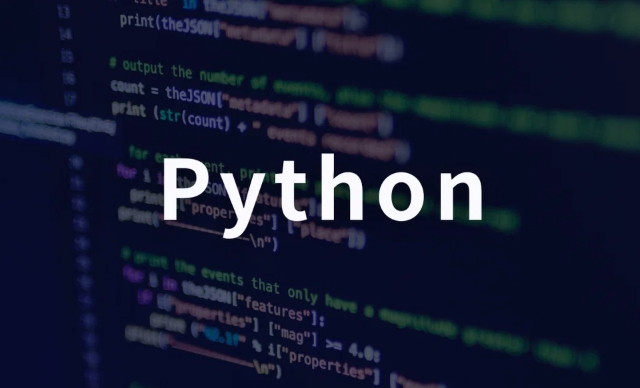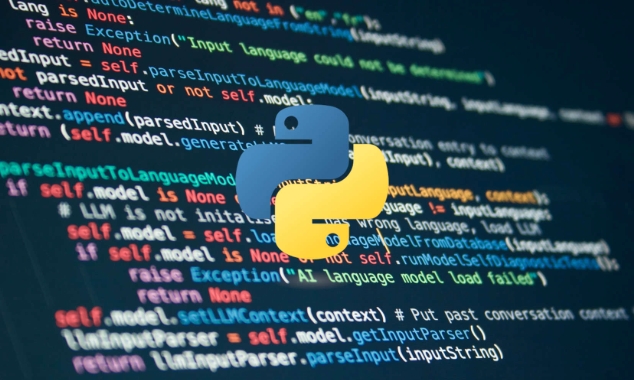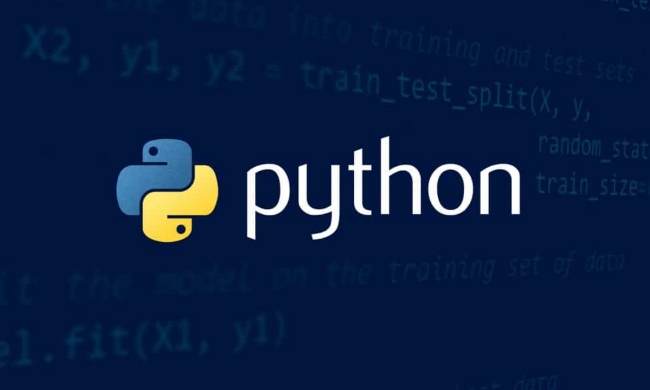Python programmers can participate in smart contract development through the following paths: 1. Use Vyper to write contracts, its syntax is close to Python, and is suitable for Ethereum development. Examples include initialization and setting greetings functions; 2. Use Brownie framework to deploy and test contracts, support Solidity/Vyper contracts and provide Pythonized processes; 3. Use web3.py to interact with Ethereum nodes to realize off-chain data reading, transaction sending, event listening and other functions. The three together form a complete Pythonized development solution.

When writing smart contracts, people usually think of Solidity, but Python can actually be used to develop smart contracts, especially on some blockchain platforms that support Python, such as Vyper (although not pure Python, but has a similar syntax) or early experimental versions of Ethereum. However, the mainstream still uses Solidity. But if you are a Python programmer and want to participate in blockchain development in a familiar language, there are still some paths to take.

The following directions may be closer to what you actually want to do.
Writing smart contracts using Vyper
Vyper is a Python-inspired smart contract language that is syntactically similar to Python, but not a complete Python implementation. It is designed to be simpler and safer, and is suitable for writing Ethereum smart contracts.

- It limits some complex syntaxes, such as class inheritance and infinite loops, which can reduce errors
- Installing Vyper is relatively simple, you can install it directly through pip
- The writing style is very similar to Python functions, such as defining variables, functions, and events, which are more intuitive.
To give a simple example:
greet: public(String[100])
@external
def __init__():
self.greet = "Hello, world!"
@external
def set_greeting(new_greeting: String[100]):
self.greet = new_greetingAfter this contract is deployed, a greeting can be set and read. If you are familiar with Python, it will not be too difficult to understand this code.

Develop and test with Brownie
Brownie is a Python-based Ethereum smart contract development framework that supports Solidity and Vyper contracts, but the entire testing and deployment process is written in Python.
- You can write contracts with Solidity, and then deploy, call, and test with Brownie
- It integrates test network, local link, dependency management (kind of like npm)
- The test is like writing a Python unit test
For example, the code for deploying the contract:
from brownie import accounts, MyContract
def main():
account = accounts[0]
contract = MyContract.deploy({'from': account})Test call:
def test_greeting(contract):
tx = contract.set_greeting("Hi there")
assert contract.greet() == "Hi there"If you like to use Python to control processes, write tests, and do automation, Brownie is a good choice.
Use Python for off-chain interaction and tool development
Even if you don't write smart contracts directly, Python can play a big role in blockchain development, such as:
- Use web3.py to interact with Ethereum nodes, read on-chain data, and send transactions
- Write scripts to batch process on-chain operations
- Build a DApp backend service to handle signatures, data analysis, event listening, etc.
web3.py is Python's Ethereum library, which can be connected to local or remote nodes after installation:
pip install web3
Basic connection and query examples:
from web3 import Web3 w3 = Web3(Web3.HTTPProvider('https://mainnet.infura.io/v3/YOUR_INFURA_KEY')) print(w3.isConnected()) # Should return True block = w3.eth.get_block('latest') print(block['number'])
You can use it to listen for events, send transactions, and parse logs, which are very useful when integrating projects.
In general, if you are a Python developer and want to participate in smart contract development, you don’t have to learn Solidity to start from scratch. You can get started with Vyper, use Brownie for deployment and testing, or use web3.py for off-chain interaction. These tools together basically form a complete Python-based smart contract development process.
The above is the detailed content of Smart Contract Development with Python. For more information, please follow other related articles on the PHP Chinese website!

Hot AI Tools

Undress AI Tool
Undress images for free

Undresser.AI Undress
AI-powered app for creating realistic nude photos

AI Clothes Remover
Online AI tool for removing clothes from photos.

Clothoff.io
AI clothes remover

Video Face Swap
Swap faces in any video effortlessly with our completely free AI face swap tool!

Hot Article

Hot Tools

Notepad++7.3.1
Easy-to-use and free code editor

SublimeText3 Chinese version
Chinese version, very easy to use

Zend Studio 13.0.1
Powerful PHP integrated development environment

Dreamweaver CS6
Visual web development tools

SublimeText3 Mac version
God-level code editing software (SublimeText3)

Hot Topics
 Polymorphism in python classes
Jul 05, 2025 am 02:58 AM
Polymorphism in python classes
Jul 05, 2025 am 02:58 AM
Polymorphism is a core concept in Python object-oriented programming, referring to "one interface, multiple implementations", allowing for unified processing of different types of objects. 1. Polymorphism is implemented through method rewriting. Subclasses can redefine parent class methods. For example, the spoke() method of Animal class has different implementations in Dog and Cat subclasses. 2. The practical uses of polymorphism include simplifying the code structure and enhancing scalability, such as calling the draw() method uniformly in the graphical drawing program, or handling the common behavior of different characters in game development. 3. Python implementation polymorphism needs to satisfy: the parent class defines a method, and the child class overrides the method, but does not require inheritance of the same parent class. As long as the object implements the same method, this is called the "duck type". 4. Things to note include the maintenance
 Python Function Arguments and Parameters
Jul 04, 2025 am 03:26 AM
Python Function Arguments and Parameters
Jul 04, 2025 am 03:26 AM
Parameters are placeholders when defining a function, while arguments are specific values ??passed in when calling. 1. Position parameters need to be passed in order, and incorrect order will lead to errors in the result; 2. Keyword parameters are specified by parameter names, which can change the order and improve readability; 3. Default parameter values ??are assigned when defined to avoid duplicate code, but variable objects should be avoided as default values; 4. args and *kwargs can handle uncertain number of parameters and are suitable for general interfaces or decorators, but should be used with caution to maintain readability.
 Explain Python generators and iterators.
Jul 05, 2025 am 02:55 AM
Explain Python generators and iterators.
Jul 05, 2025 am 02:55 AM
Iterators are objects that implement __iter__() and __next__() methods. The generator is a simplified version of iterators, which automatically implement these methods through the yield keyword. 1. The iterator returns an element every time he calls next() and throws a StopIteration exception when there are no more elements. 2. The generator uses function definition to generate data on demand, saving memory and supporting infinite sequences. 3. Use iterators when processing existing sets, use a generator when dynamically generating big data or lazy evaluation, such as loading line by line when reading large files. Note: Iterable objects such as lists are not iterators. They need to be recreated after the iterator reaches its end, and the generator can only traverse it once.
 Python `@classmethod` decorator explained
Jul 04, 2025 am 03:26 AM
Python `@classmethod` decorator explained
Jul 04, 2025 am 03:26 AM
A class method is a method defined in Python through the @classmethod decorator. Its first parameter is the class itself (cls), which is used to access or modify the class state. It can be called through a class or instance, which affects the entire class rather than a specific instance; for example, in the Person class, the show_count() method counts the number of objects created; when defining a class method, you need to use the @classmethod decorator and name the first parameter cls, such as the change_var(new_value) method to modify class variables; the class method is different from the instance method (self parameter) and static method (no automatic parameters), and is suitable for factory methods, alternative constructors, and management of class variables. Common uses include:
 How to handle API authentication in Python
Jul 13, 2025 am 02:22 AM
How to handle API authentication in Python
Jul 13, 2025 am 02:22 AM
The key to dealing with API authentication is to understand and use the authentication method correctly. 1. APIKey is the simplest authentication method, usually placed in the request header or URL parameters; 2. BasicAuth uses username and password for Base64 encoding transmission, which is suitable for internal systems; 3. OAuth2 needs to obtain the token first through client_id and client_secret, and then bring the BearerToken in the request header; 4. In order to deal with the token expiration, the token management class can be encapsulated and automatically refreshed the token; in short, selecting the appropriate method according to the document and safely storing the key information is the key.
 What are Python magic methods or dunder methods?
Jul 04, 2025 am 03:20 AM
What are Python magic methods or dunder methods?
Jul 04, 2025 am 03:20 AM
Python's magicmethods (or dunder methods) are special methods used to define the behavior of objects, which start and end with a double underscore. 1. They enable objects to respond to built-in operations, such as addition, comparison, string representation, etc.; 2. Common use cases include object initialization and representation (__init__, __repr__, __str__), arithmetic operations (__add__, __sub__, __mul__) and comparison operations (__eq__, ___lt__); 3. When using it, make sure that their behavior meets expectations. For example, __repr__ should return expressions of refactorable objects, and arithmetic methods should return new instances; 4. Overuse or confusing things should be avoided.
 How does Python memory management work?
Jul 04, 2025 am 03:26 AM
How does Python memory management work?
Jul 04, 2025 am 03:26 AM
Pythonmanagesmemoryautomaticallyusingreferencecountingandagarbagecollector.Referencecountingtrackshowmanyvariablesrefertoanobject,andwhenthecountreacheszero,thememoryisfreed.However,itcannothandlecircularreferences,wheretwoobjectsrefertoeachotherbuta
 Describe Python garbage collection in Python.
Jul 03, 2025 am 02:07 AM
Describe Python garbage collection in Python.
Jul 03, 2025 am 02:07 AM
Python's garbage collection mechanism automatically manages memory through reference counting and periodic garbage collection. Its core method is reference counting, which immediately releases memory when the number of references of an object is zero; but it cannot handle circular references, so a garbage collection module (gc) is introduced to detect and clean the loop. Garbage collection is usually triggered when the reference count decreases during program operation, the allocation and release difference exceeds the threshold, or when gc.collect() is called manually. Users can turn off automatic recycling through gc.disable(), manually execute gc.collect(), and adjust thresholds to achieve control through gc.set_threshold(). Not all objects participate in loop recycling. If objects that do not contain references are processed by reference counting, it is built-in






